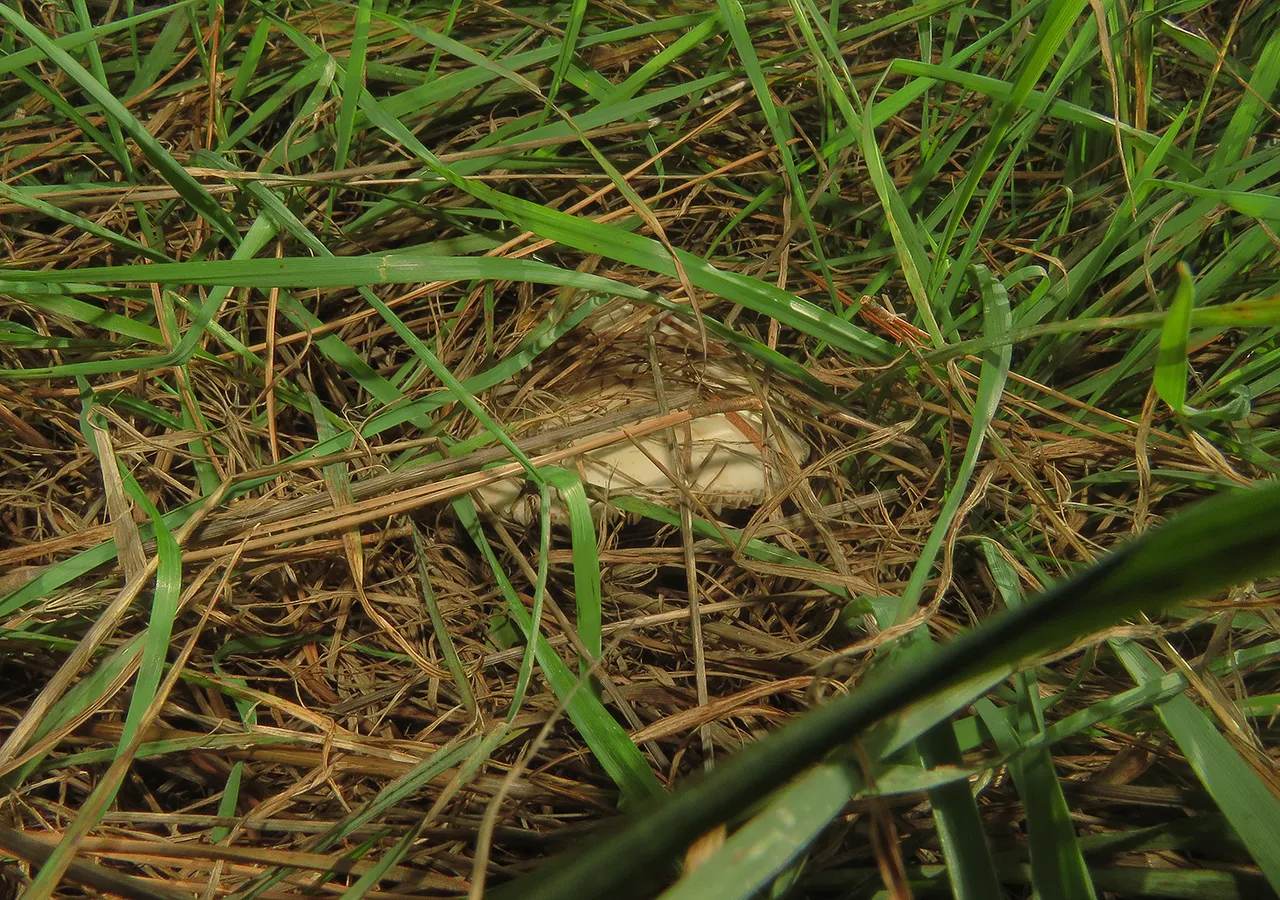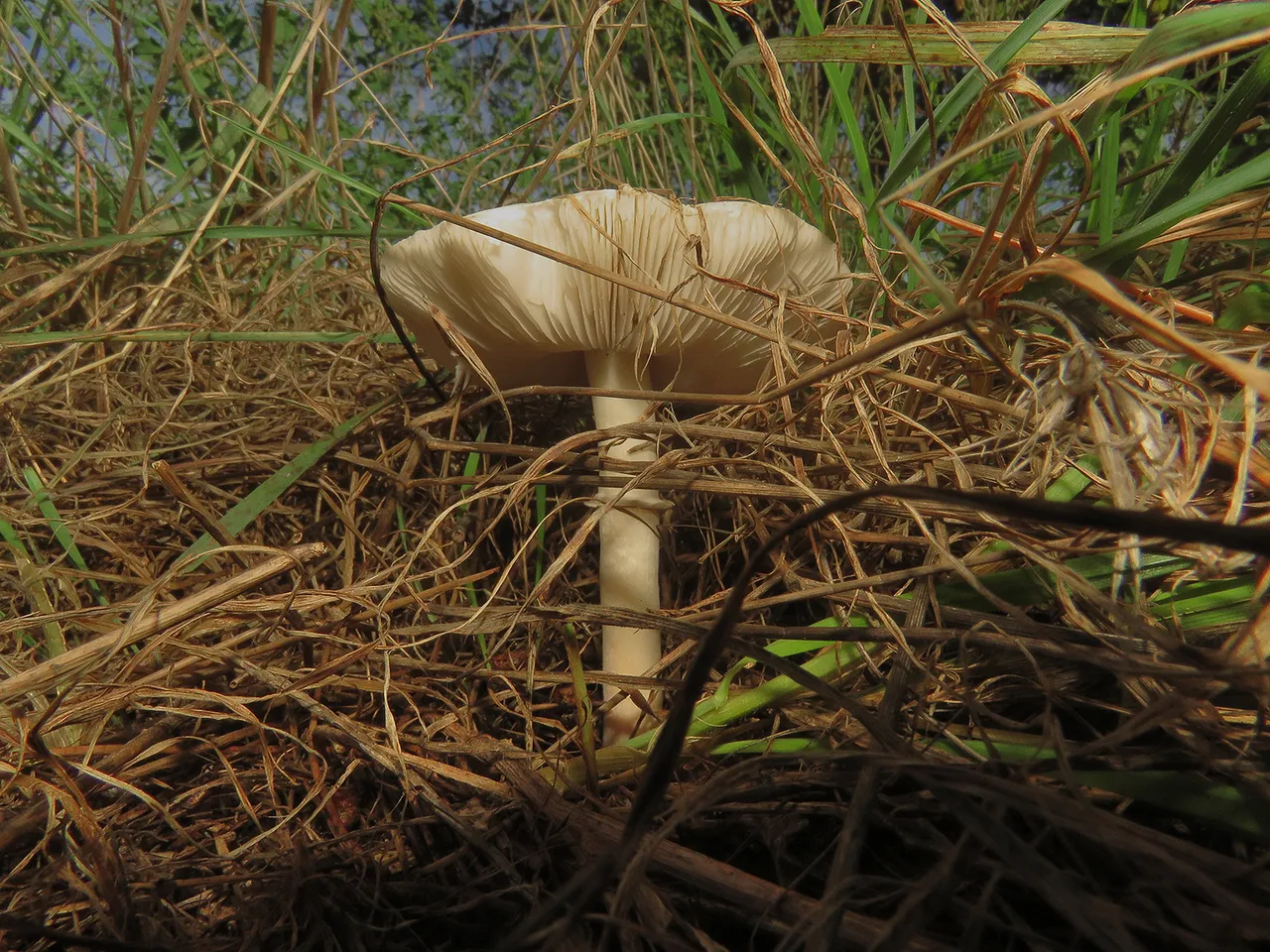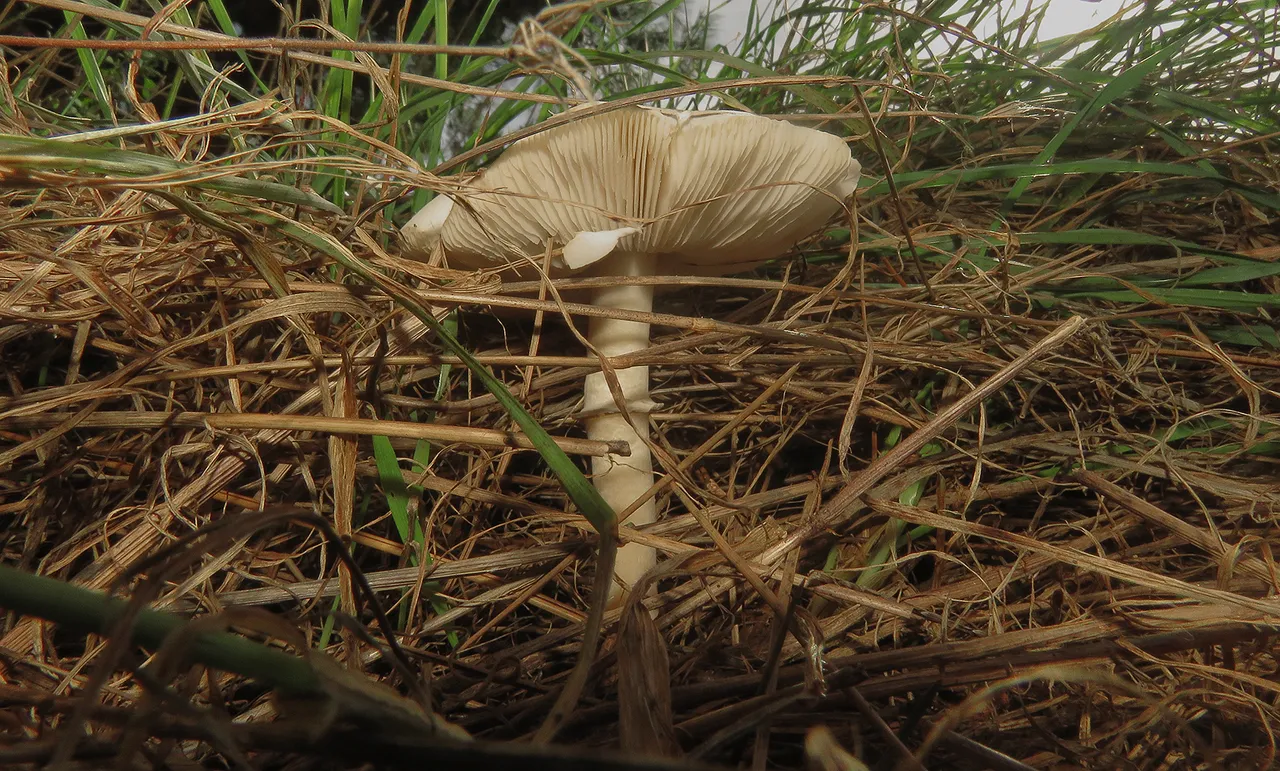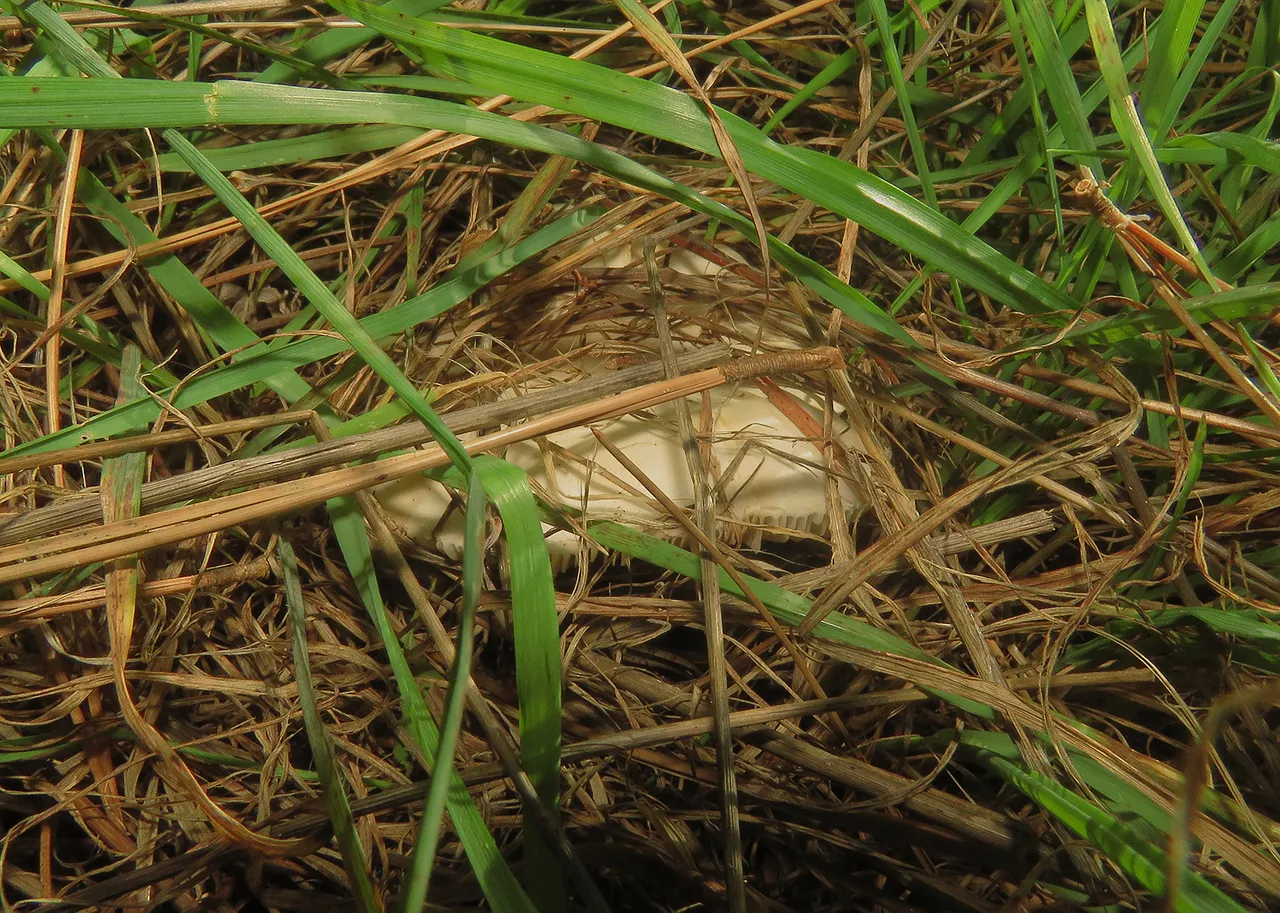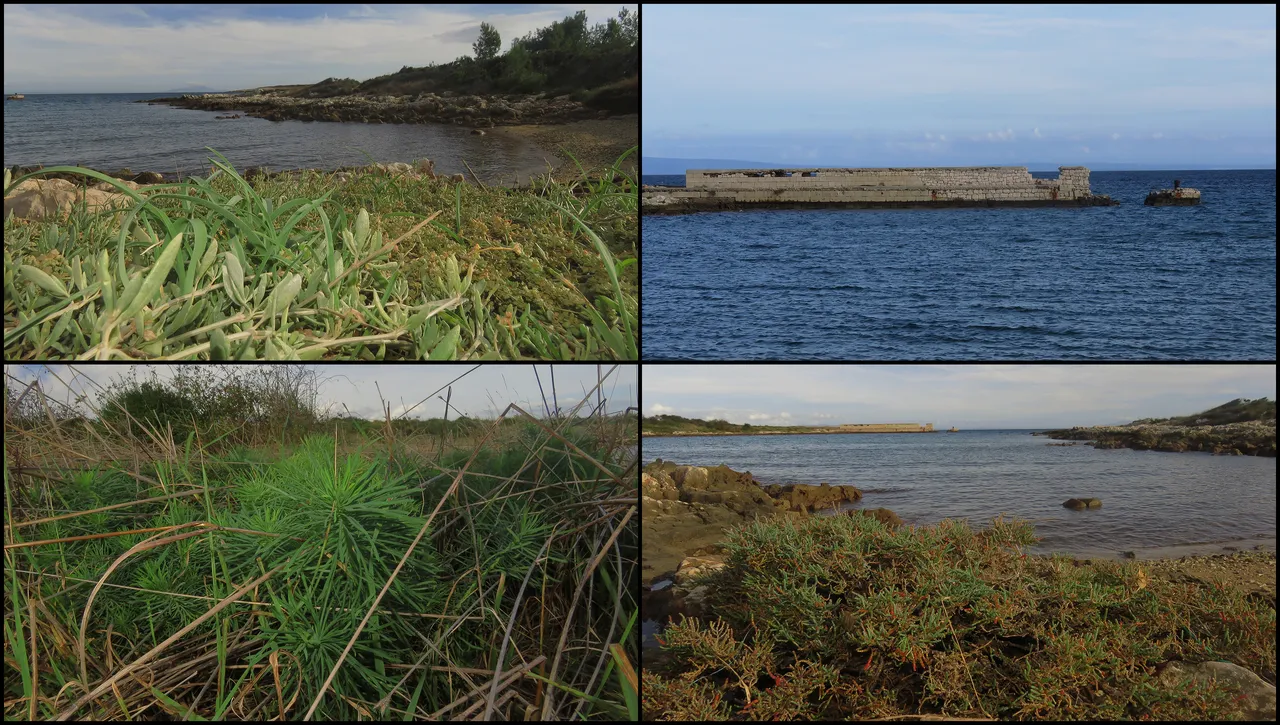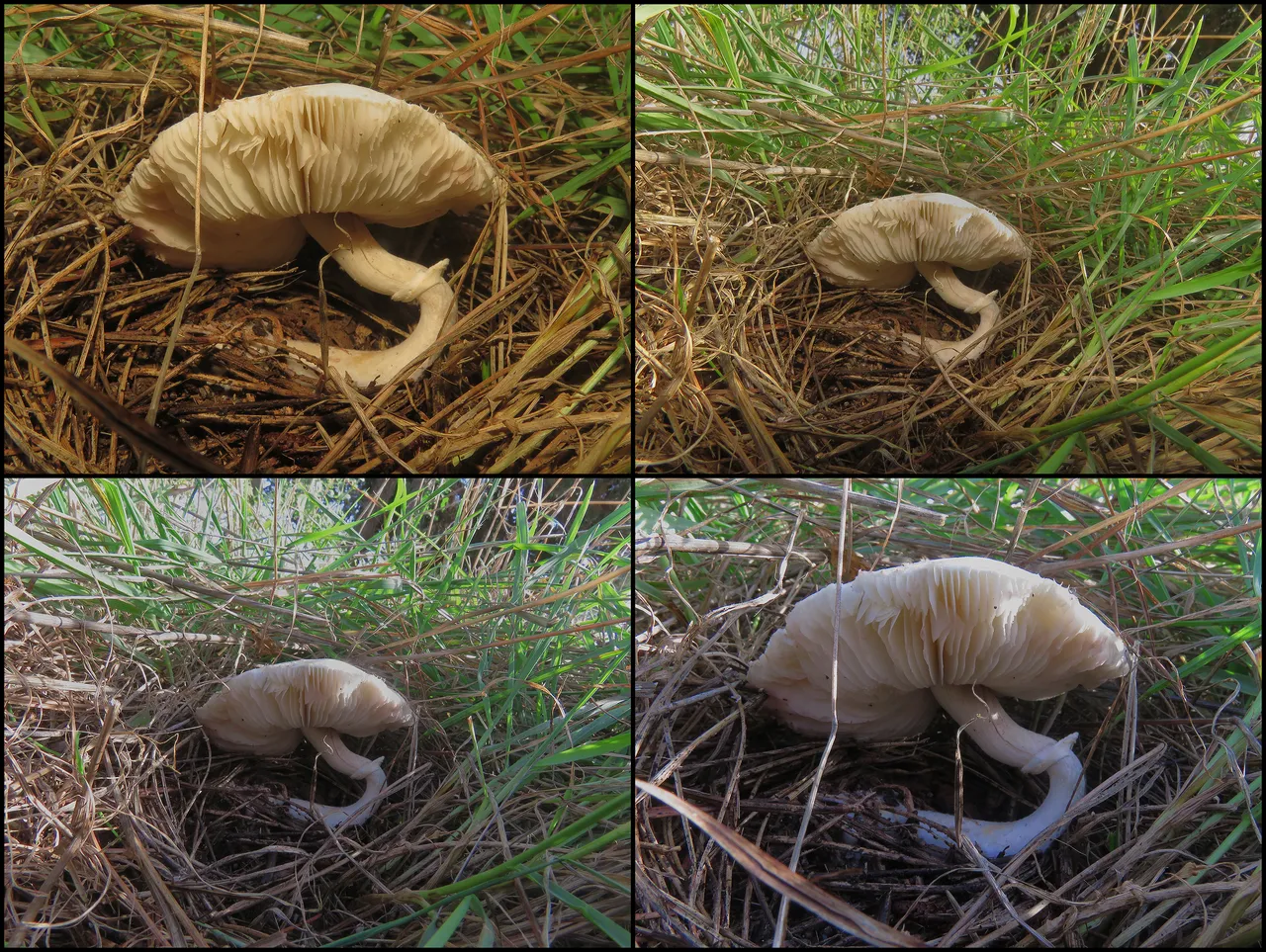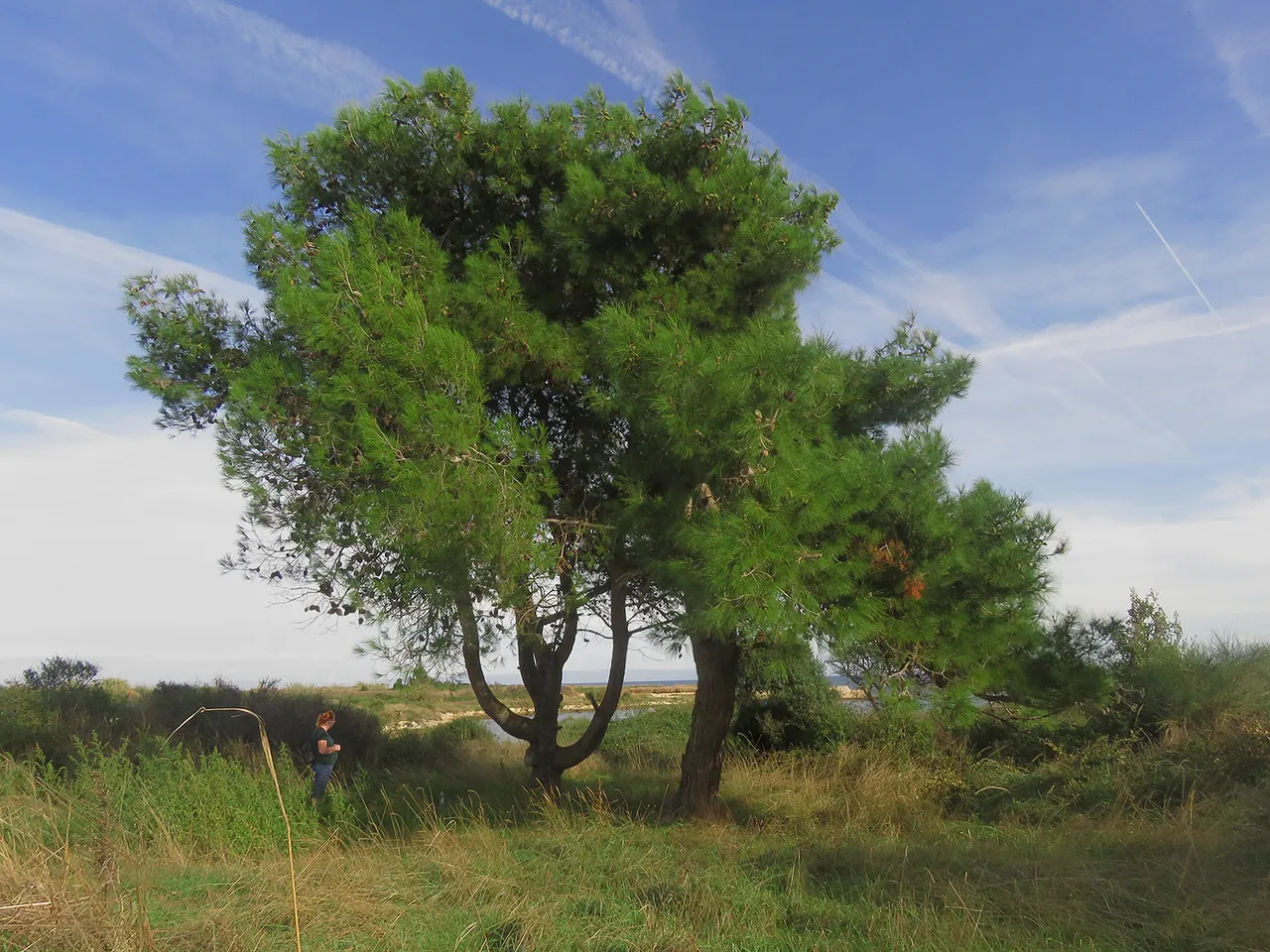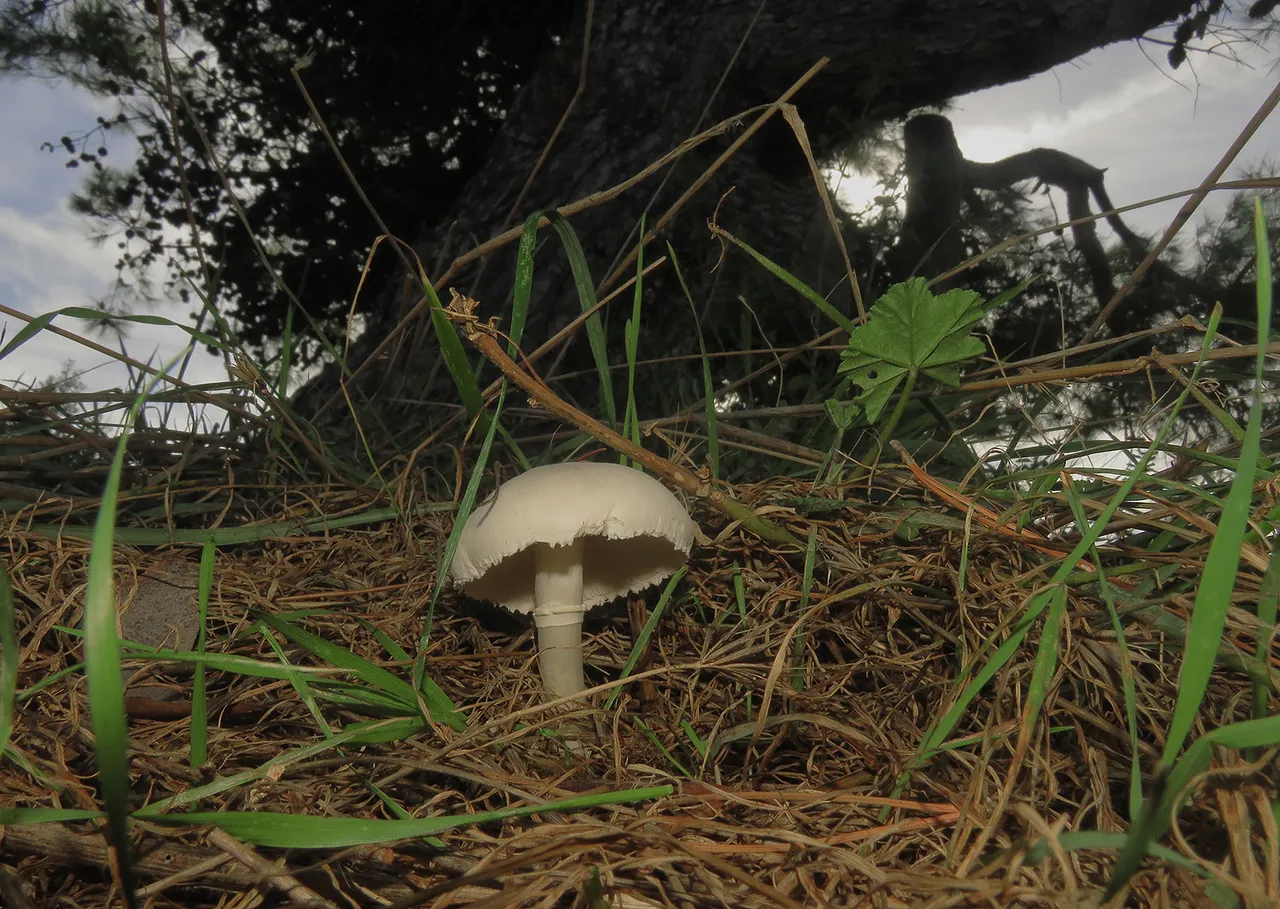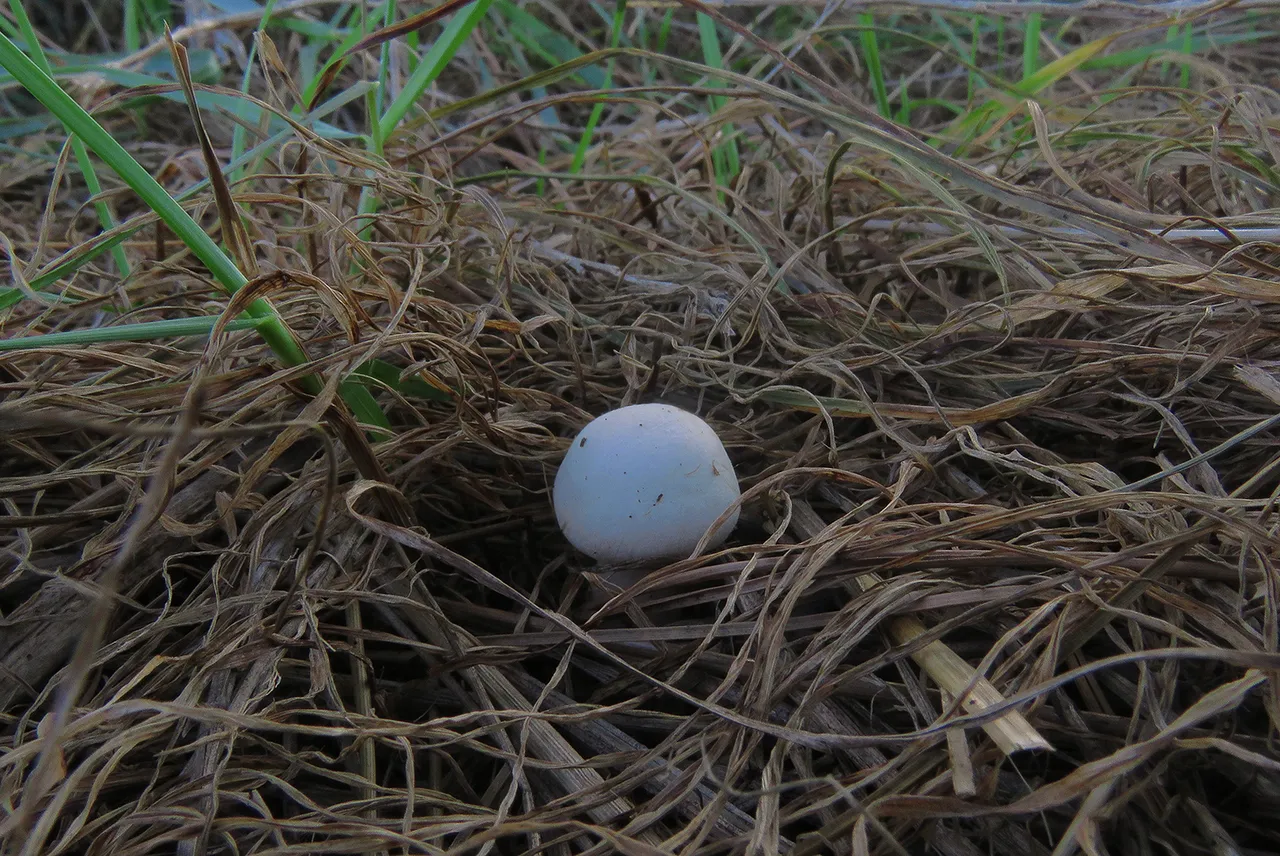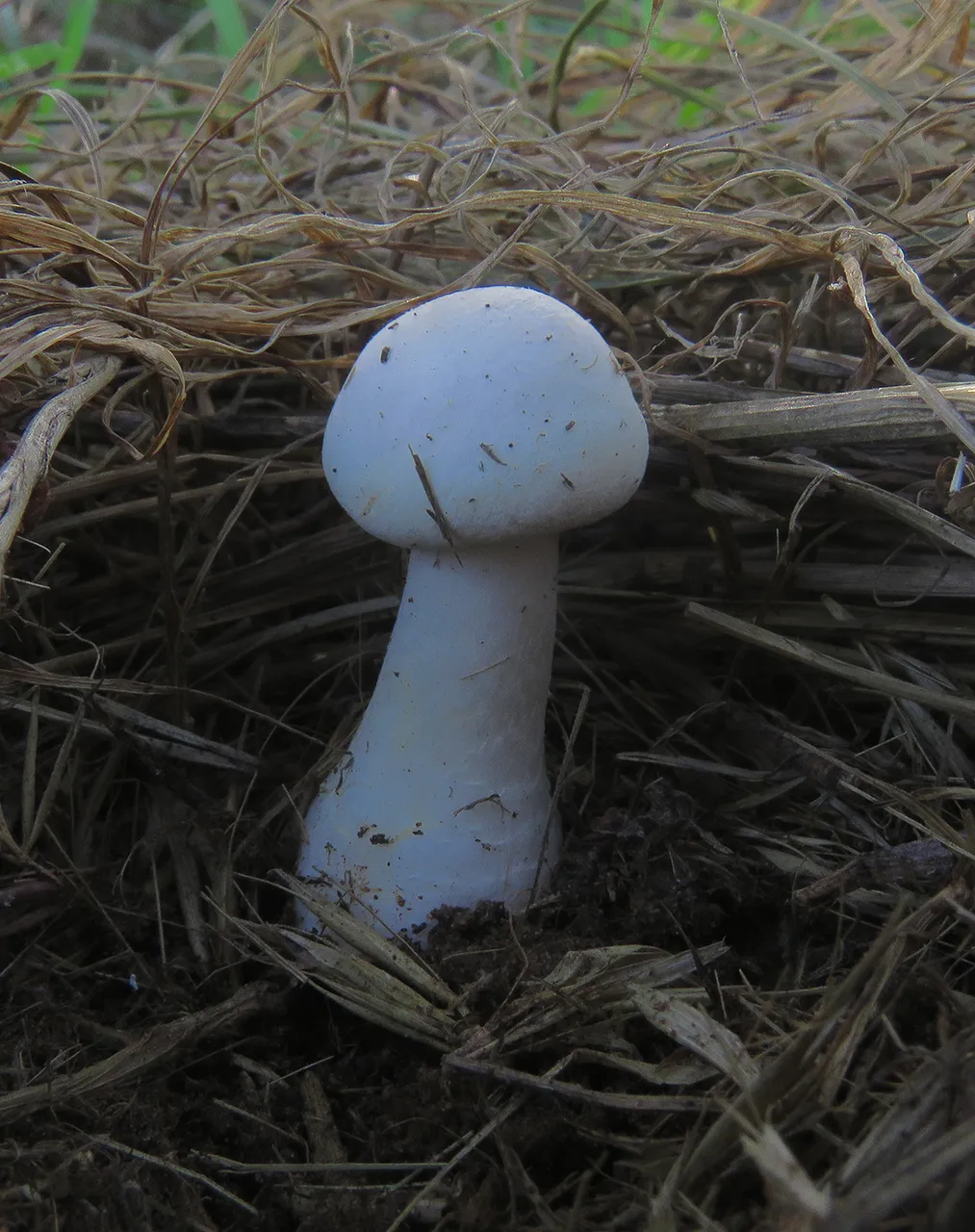I took a walk by the sea today. With a Wednsdey Walk in mind. But very soon, I came across some mushrooms, so I'm writing a Fungi Lovers post right now.
It all happened early in the afternoon, on the stretch of coastline a little less than a kilometer from the harbor of Liznjan, and about four kilometers from where I live.
This is the Leucoagaricus leucothites, a relatively big, meaty mushroom that often appears in gardens and parks. To get the mushroom look the way it looks in this photograph, I had to remove quite a bit of grass in front of it. And the camera had to be very close to the ground. In the following shot ...
... you can see the same mushroom from a different angle before I made all the preparations for a good fungi portrait.
From above, the mushroom was almost invisible.
Leucoagaricus leucothites fruiting body was well hidden in the dense growth of relatively tall grass that the wind that often blows in this seaside area has bent into a more or less horizontal position. This wasn't the only mushroom I found today but it surely was the only species.
In the following photograph ...
... you can see another mushroom of the same kind. This one was photographed less than a meter from the previous one. Just like before ...
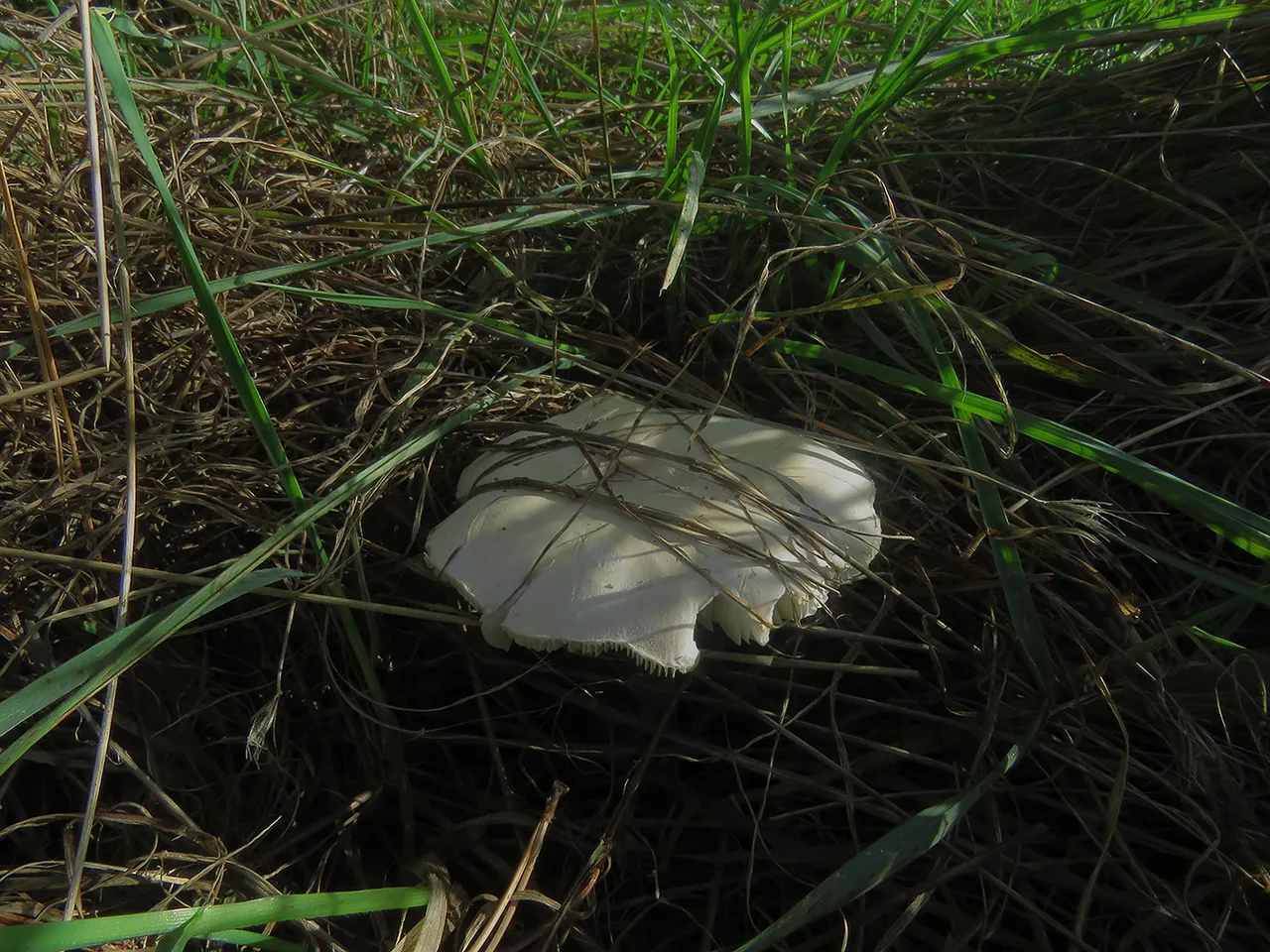
... I had to remove a bit of grass ...
... before portraiting this slightly bigger Leucoagaricus leucothites.
The grass protects the fruiting bodies from the wind and creates a stable, humid environment in this coastal habitat that isn't fungi-friendly in general.
In this set of four photographs, you can see a bit of the coastal scenery; the sky, the sea, the old, partially destroyed pier made of stone, and some interesting plants typical for that salty habitat.
Growing through a dense layer of grass can shape a fruiting body in quite a few different ways. This one has a bent stalk, for example, while the cap is properly developed.
All the mushrooms shown so far in the post were growing three or four meters from these two isolated pines surrounded by grass, shrubs, and the sea.
A friend who was there with me is also present in the shot.
The small human figure nicely accentuates the majesty of the trees.
Closer to the trunks of those pines, I found two more Leucoagaricus leucothites mushrooms. Both fruiting bodies were younger than those further from the trees.
The cap of the first one was on the way to becoming a completely spread fungal parasol but wasn't exactly there yet. I took this photograph after removing some of the surrounding grass. The second one ...
... was completely closed. It looked like a small, milky-white sphere protruding from the dry grass. In the following photograph ...
... you can see how the young mushroom looked when I removed some of the grass.
I didn't know anything about Leucoagaricus leucothites prior to today. I have seen these and similar white mushrooms many times but I never checked what species they are. They always looked a lot like poisonous Amanitas to me and that was more than enough to avoid them.
Today, thanks to the Internet, I found out the name of the species and that the Leucoagaricus leucothites " is sometimes regarded as edible but the species is suspected of being poisonous due to gastric-upset-causing toxins."
The same article also states that "It could also be confused with the deadly Amanita ocreata."
AND THAT'S IT. AS ALWAYS HERE ON HIVE, THE PHOTOGRAPHS ARE MY WORK.
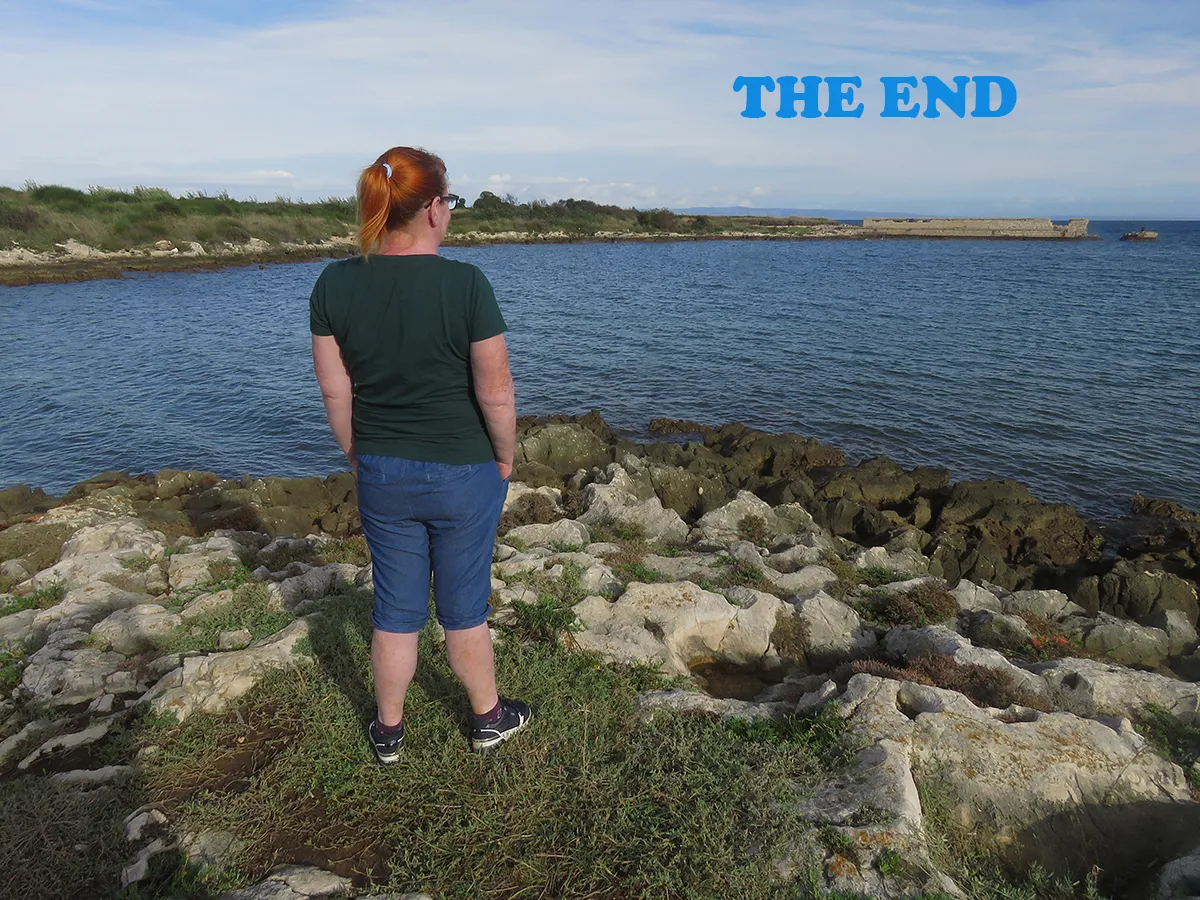
The following links will take you to the site with more information about the protagonists of this post. I found some stuff about them there.
https://en.wikipedia.org/wiki/Leucoagaricus_leucothites



